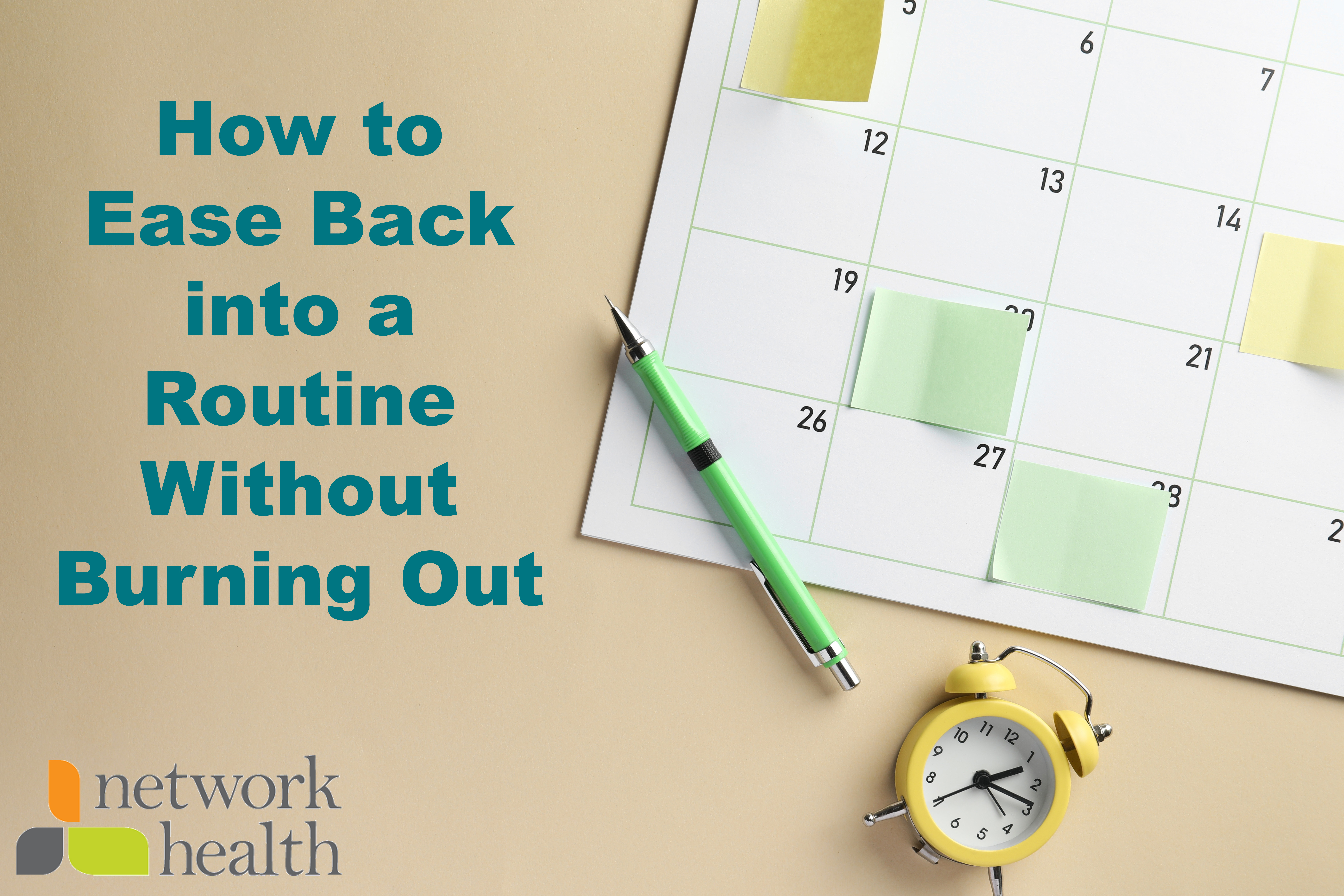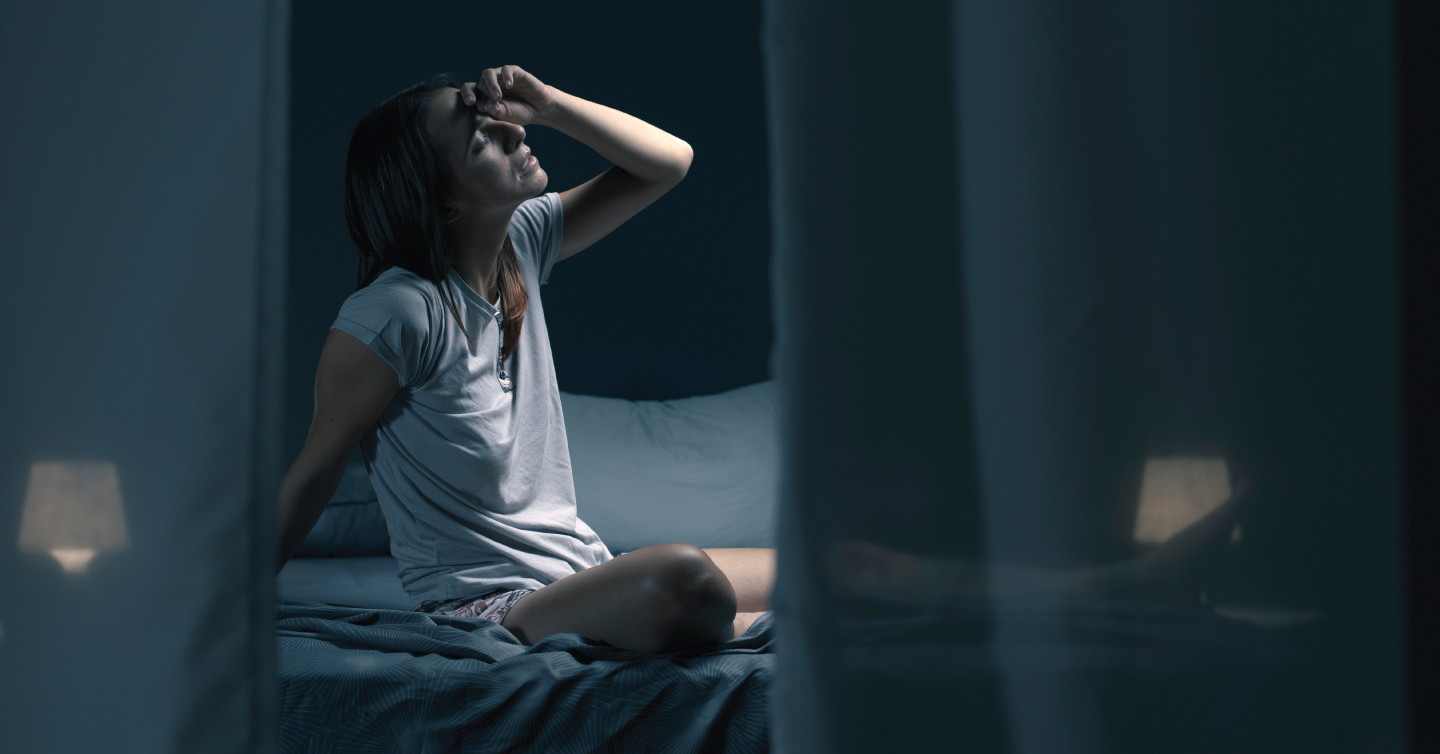More Than Ever, Screen Time Keeps Us Connected, But Moderation is Key

How to Unplug for Wellness
By Aimee Donnelly, wellness coordinator at Network Health
Originally published on 8/3/2021 at 9:30 a.m.
Over the last 18 months, the safety measures surrounding limiting the spread of the new coronavirus and COVID-19 pandemic have made technology an even more central part of our lives. While your iPad, smartphone or streaming device used to simply be the way you unwound after a day of work, these devices are now necessities for our professional and social lives.
With many still working from home, and a new coronavirus variant that has health officials around the world concerned for potentially more lockdowns, this new relationship with technology appears to be here to stay…for a while, at least.
Risks of screen time
Unfortunately, all that time in front of screens can add up to significant health risks for children and adults alike, the effects of which we may not know for a decade or more.
Still, experts have observed more immediate risks that arise when a healthy approach to entertainment and informative screen devices is not maintained.
Problems sleeping
The stress and anxiety of our lifestyles being flipped on their heads and the abundance of time at home, sleep is in short supply.
Beyond the addictive nature of video games, bingeable TV and social media apps that are programmed to keep you glued to your screens, the blue light that device screens emit can interfere with your brain’s natural sleep programming.
For this reason, experts recommend at least a 30-minute buffer between waking up and checking notifications and a one-hour buffer between looking at your screens and going to bed.
Fatigue and aches
Another issue that can further worsen your ability to sleep and function is the amount of sedentary time that often accompanies screen time. Spending a majority of the day seated leads to poor posture, which can result in pain, fatigue and soreness, particularly in your neck and your back.
Mobile devices, like smartphones or handheld gaming systems, force us to look down at their screens, which can cause or worsen neck pain while our less-than-perfect posture seated at a desk or in front of the TV creates aches in our back that can become chronic over time.
Lack of activity
Physical activity isn’t just your gateway to a healthier and more fit you, it’s also the way your body regulates hormones, blood flow, brain activity and several other important functions. Getting lost in the endless scrolling of a social media feed or the Great British Bake Off on Netflix can keep you glued to your seat, making it easier to put off exercise or physical activity.
Eye conditions
Excessive screen time can lead to eye fatigue, blurry vision and dry eyes due to continued focus for an extended period of time. These are uncomfortable results of screen time, but over time can become more serious eye health issues.
Mental health concerns
Finally, mental and emotional health are highly susceptible to the negative effects of unmoderated screen time. In 2017, health experts at San Diego State University concluded that “increased time spent in front of a screen – in the form of computers, cell phones and tablets – might have contributed to a recent uptick in symptoms of depression and suicide-related behaviors and thoughts in American young people, especially girls.”
Beyond the isolating nature of consuming content online, social media – which can become a surrogate for authentic social interaction – can be a detriment to the mental and emotional health of young people. Online interactions often serve as a vessel for bullying and create an environment where anonymity allows users to express extreme points of view without the accountability that follows an in-person interaction.
How to limit screen time
Understanding the above risks, it’s clear that moderation is key for screen time, especially outside of work hours. But how do we moderate our time online?
The bad news is that it’s harder than ever before to step away from the screen. The good news is that it’s not impossible to break free from the screen addiction – it just requires some intentionality.
Here are some ideas to help you and your family break free from the electronic pull.
Place hard limits on screen time for yourself, children or your family
Give yourself limits for the amount of time in a day you’ll spend in front of a screen (outside of what your work may demand). Most smartphones have a feature that will let you lock the device or certain apps on it once you have hit a certain amount of time spent.
Since health experts are already starting to conclude that our relationship with online technology like smartphones can be similar to drug addiction, starting with higher limits and then working your way down is a good way to prevent the cold-turkey withdrawal that may lead you to giving up.
Draw a line between connected time and consumption time
While the physiological risks of screen time (like trouble sleeping) apply to any time spent in front of a monitor or device, understanding “why” you’re using the device may help you better measure the time spent. For instance, a video call with a grandparent or a child who is off at college is time you’ve spent growing with another person, learning about them and being able to stay in touch despite distance or medical risk of in-person visitation.
Prioritize this screen time.
Use smartphone notification settings to mute engagement-hungry apps
Go into your smartphone’s settings and view your app-by-app breakdown under the notifications setting. This will allow you to silence certain apps that may be “loud-talkers” and are constantly trying to get you to come back in and see what’s new.
These apps make their profits by showing you ads as you scroll through your feeds. The less you use them, the more aggressive they will be about trying to get you back in. Turn off notifications to stop them in their tracks.
Get the screens out of the bedrooms
Many of us grew up with a TV and then a computer in our home bedroom. These days, it’s the smartphone we charge on our nightstand that is our biggest liability to going to sleep at a healthy time. By charging your phones in a communal area in the home, like the home office or a dining room, you’re helping everybody see bedtime as just that – bedtime.
This leads to a much healthier sleep schedule and will prevent those late nights endlessly scrolling.
Do more offline
Ultimately, moderating screen time shouldn’t be about not doing something, so much as it is about doing something else. Rather than watching three hours of Netflix (we’ve all been there), make time for a picnic out at the park. Instead of keeping your phone on your nightstand, keep a good book (or non-blue-light-emitting eBook reader) handy and spend that time learning and dive into your imagination.
If your kids lean toward video games for their screen time, introduce them to layered board games with fun dynamics like Ticket to Ride, King of Tokyo, Camel Up or Planet.
You can also use screen time to learn a new skill that will help take you offline. During the Safer at Home order in Wisconsin last year, we published a short blog that features six things you can learn online completely for free. You can read it here.
When it comes to kids, modeling a healthy, intentional and moderated relationship with technology and screens goes a long way. By finding ways to have fun that don’t require a charging cable and login, you’ll be able to make the most of time in any season here in Wisconsin.
For more information on how your Wisconsin-based health insurance plan can help with wellness for you and your family, contact us today.



